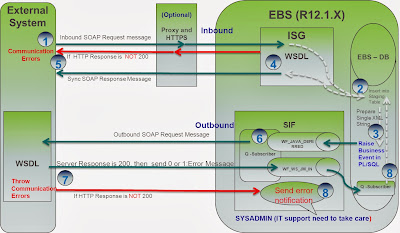API
management is concerned with managing external APIs
where consumers are unknown. SOA Governance, on the other hand, is
about managing services with known consumers.
SOA
and API management are the same but different approach. SOA has its
reusability and loose coupling, web based access values, but it may not
suitable for every enterprise. SOA work will maintain its worth because
it is always amenable to use in the newer Web technologies, for both
development and integration. API Management is about connecting different
parts of a hybrid IT infrastructure including social, mobile and cloud.
o API
Management solution needs to integrate with SOA (at least Enterprise Service
Bus) for sharing the metadata about the available enterprise data.
o APIs
are created as business approach to reach new markets with BYOD model, where
are SOA is to reach web customers.
o APIs
provide SOA with a way to reach beyond the controlled environment of the
enterprise, while SOA provides APIs with acceleration and proven design
principles.
o Defining
a strategy for how to merge SOA and API management will be important(long term)
to the enterprises.
o So,
we can say that both have close
relation and both help customers for business agility.
Comparisons
|
API Management
|
SOA Services
|
|
API
Management is natural extension of SOA. All API are services, but not
all APIs are good services.
|
A set of
components which can be invoked, and whose interface descriptions can be
published and discovered.
|
|
API
management is concerned with managing external APIs where consumers
are unknown
|
SOA
Governance, on the other hand, is about managing services with known
consumers.
|
|
Web APIs more truly reflect the nature of the
Web
|
SOA reflects the nature of Web services
|
|
More suitable for cloud, mobile, big data
platforms to involve external world to innovate new ideas.
|
More suitable within the enterprise integration
|
|
API management enables enterprise services through channels and
new forms of innovative products and services.
|
A business centric architectural approach.
|
|
The API security model says ‘good old SSL is
good enough.
|
Security
is handles with high standards at the message lever in a complex way.
|
|
Its
more on REST and JSON services
|
Its
standards based and mostly on SAOP
|
|
In a lot of ways, you can think of it as the
web for machine-to-machine communication
|
Its
machine-to-machine and machine-to-people as well
|
|
Doesn’t require you to sit down and install
special infrastructure or libraries to do machine-to-machine communication
|
Needs
special software
|
|
Designed for reuse by many apps
platforms. API provides
|
Designed
to reuse in standards basis over the web/connectors
|
